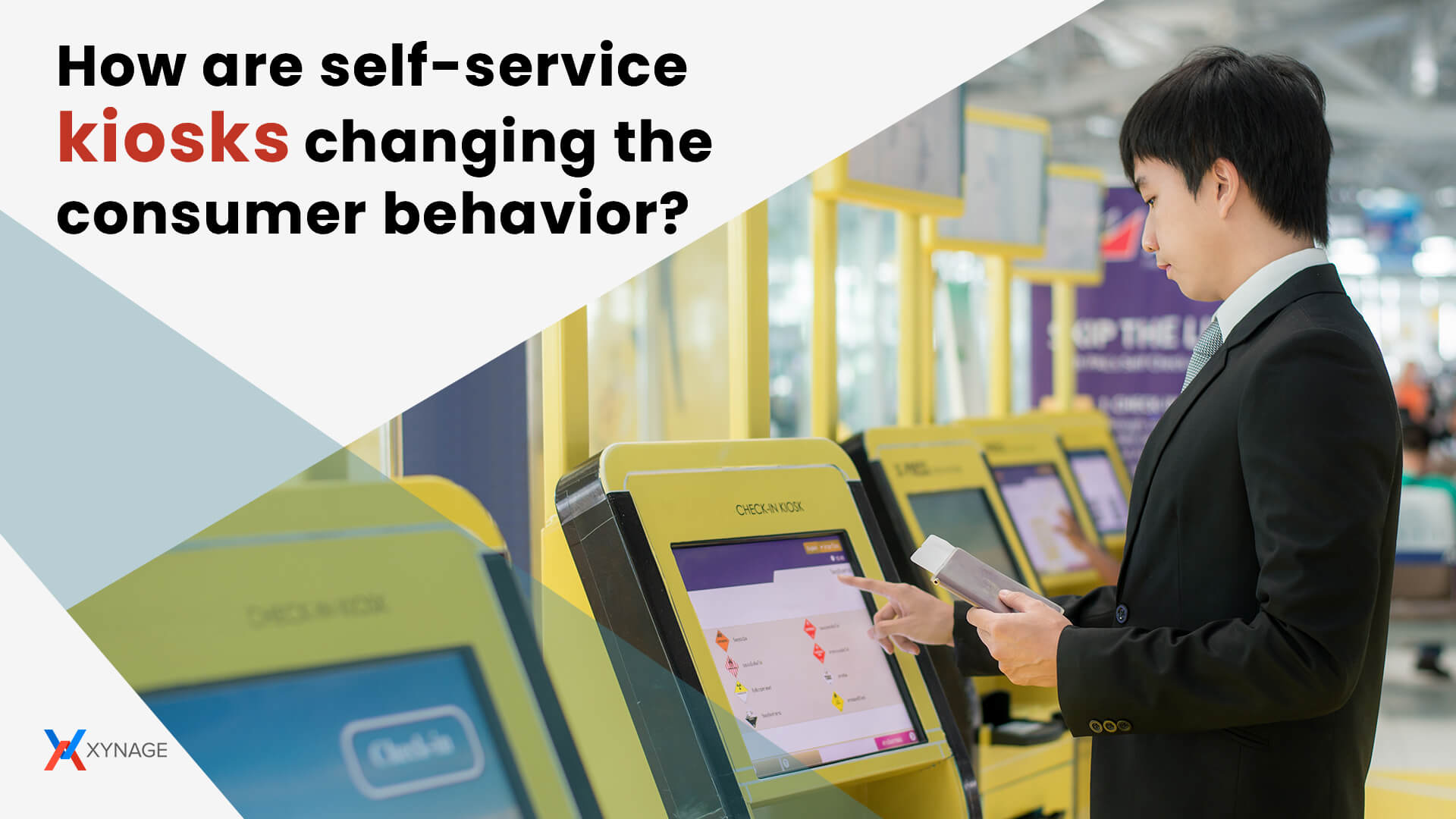Self-service technology has been leaving a transformative effect across the globe, especially on consumer behavior.
The advantages of using digital kiosks in customer service are becoming increasingly prominent.
Now, when you can visit your favorite restaurant, you’ll be able to order food via a touch screen kiosk and get the food straight to your table rather than ordering at the counter.
You can even ask for particular ingredients to be removed or included from your order.
This raises an intriguing question: how is this change going to impact customer behavior, and can we expect to see the trend get away from face-to-face consumer service?
The answer is, yes! According to research from Markets and Markets, the interactive kiosk market will be worth $32.8 billion by 2025. It is clearly a quite significant trend in consumer service, but could it also result in a shift in when we make purchases, how likely we are to spend money, and how often we make them?
Regardless, the answer appears to be yes.
Below are some of the ways self-service kiosks technology is profoundly affecting consumer behavior
1 – Better customer satisfaction
Self-service technology was developed to increase convenience, and that is what self-service kiosks at stores and malls are doing.
Among customers who love to do things for themselves and have control of all situations, the technology could not have come at a perfect time.
It speeds up the service delivery, reduces delays, and eliminates the stress related to waiting.
Research by Taylor and Francis leads to a “significant and positive relationship between self-service technology and loyalty, service quality, and behavioral intentions.”
The outcome is usually happier consumers who are more willing to try the service again, leading to boosted sales.
2 – Eliminating social pressures
It is common to feel self-conscious while ordering food at a restaurant. For example, you may feel socially constrained into ordering a smaller meal than you would like from a QSR as you feel like the person at the counter might judge you.
Self-service kiosks remove this social pressure, allowing consumers to pick whatever they wish without the risk of judgment.
Another advantage of this is that it tends to increase the average expenditure for consumers. As Jackie Prange from TouchBistro points out, “one of the most significant benefits of this consumer-facing technology is the effect it will have on your average expenditure.”
Not only does self-service kiosks help consumers feel more comfortable, but it can also have significant positive effects on profits and ROI.
3 – An uptick in “special instructions”
This is quite interesting. When people approach the counter, they usually merely describe their order in as few words as possible.
However, when interacting with self-service digital kiosks, they seem to go into more detail. On average, there is a 14% increase in special instructions when customers use those machines.
There are several potential reasons for this. It is possible that consumers do not yet trust self-service kiosks to understand their orders. Or maybe it is the judgment-free environment?
Professor Buell says that it is a combination of the judgment free-environment as well as the fact that customers feel that because machines do not get worn out or tired, they can feed them as many instructions as they like.
4 – Risen market share for challenging to pronounce items
Studies conducted at the Duke’s Fuqua School of Business, National University of Singapore, and Rotman School of Management show that when a store changes to self-service from face-to-face, more orders are recorded for products with difficult pronunciation.
For instance, in liquor stores shifting to self-service technology has been shown to grow orders by 8.4%.
According to researchers, the primary reason for this is that customers fear to appear unsophisticated or being misunderstood in front of the clerks. Self-service kiosks remove that fictional fear from them.
Final Thoughts
Although the technology faces a plethora of challenges, there is no doubt that self-service kiosks and digital signage solutions are an amazing tool for companies as well as digital consumers.
Self-service kiosks are expanding quickly as consumers enjoy not only the efficiency and convenience but also prefer the flexibility and freedom to customize their orders that match their specific preferences that are offered by these digital kiosks.
The bottom line is that these machines generate not only happier consumers, but also boost expenditure and ROI for small, medium, and large business owners.



